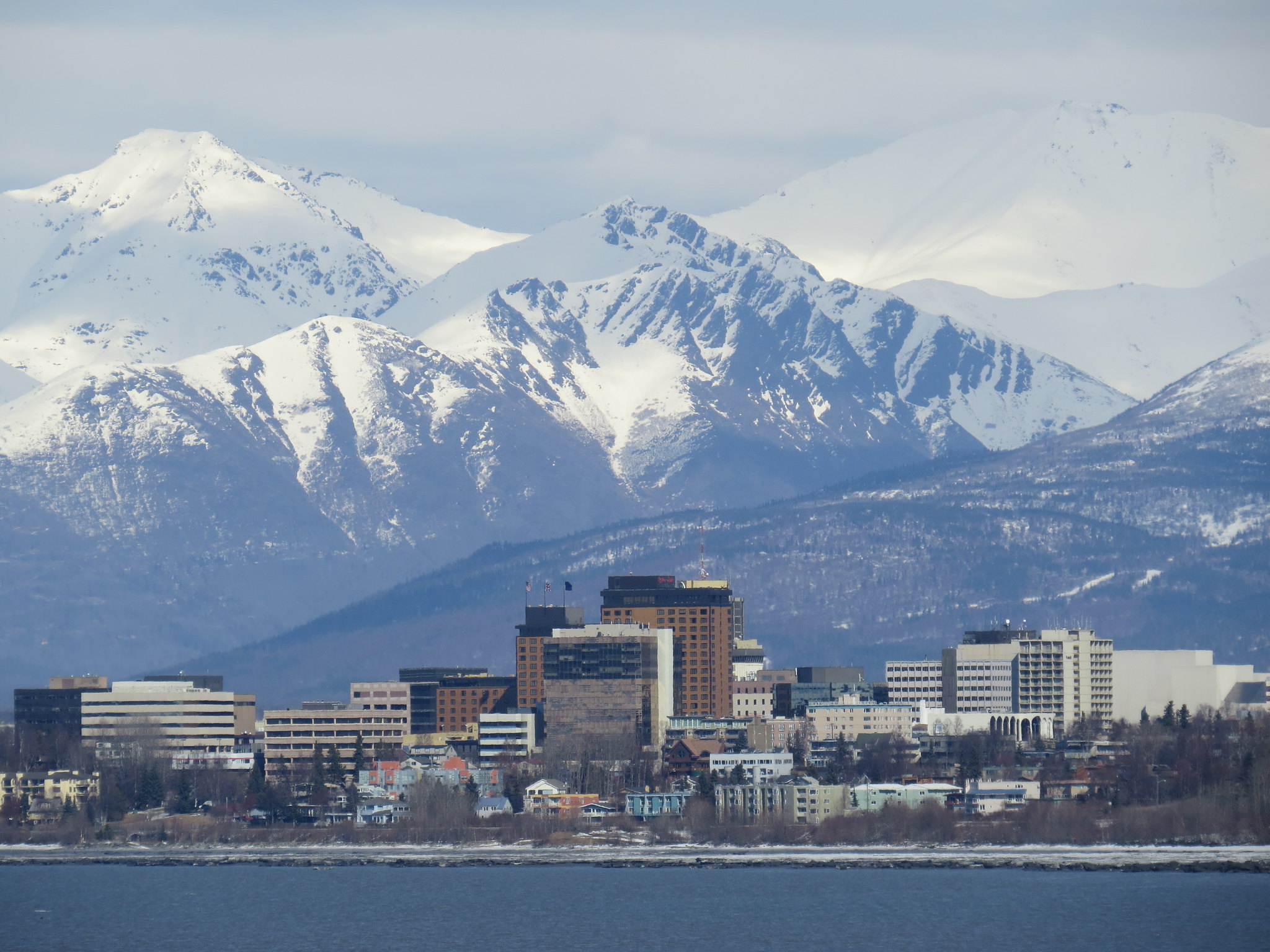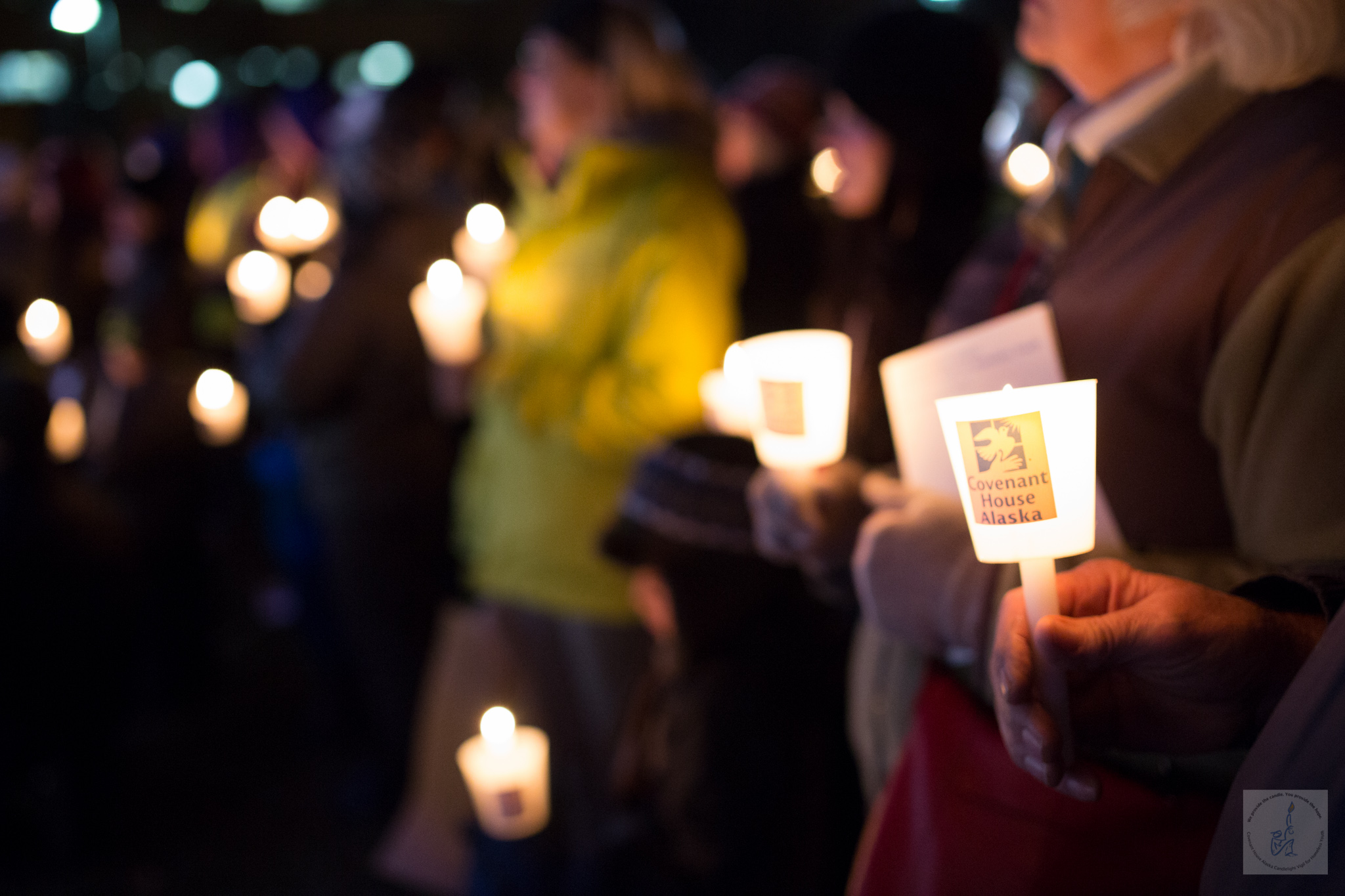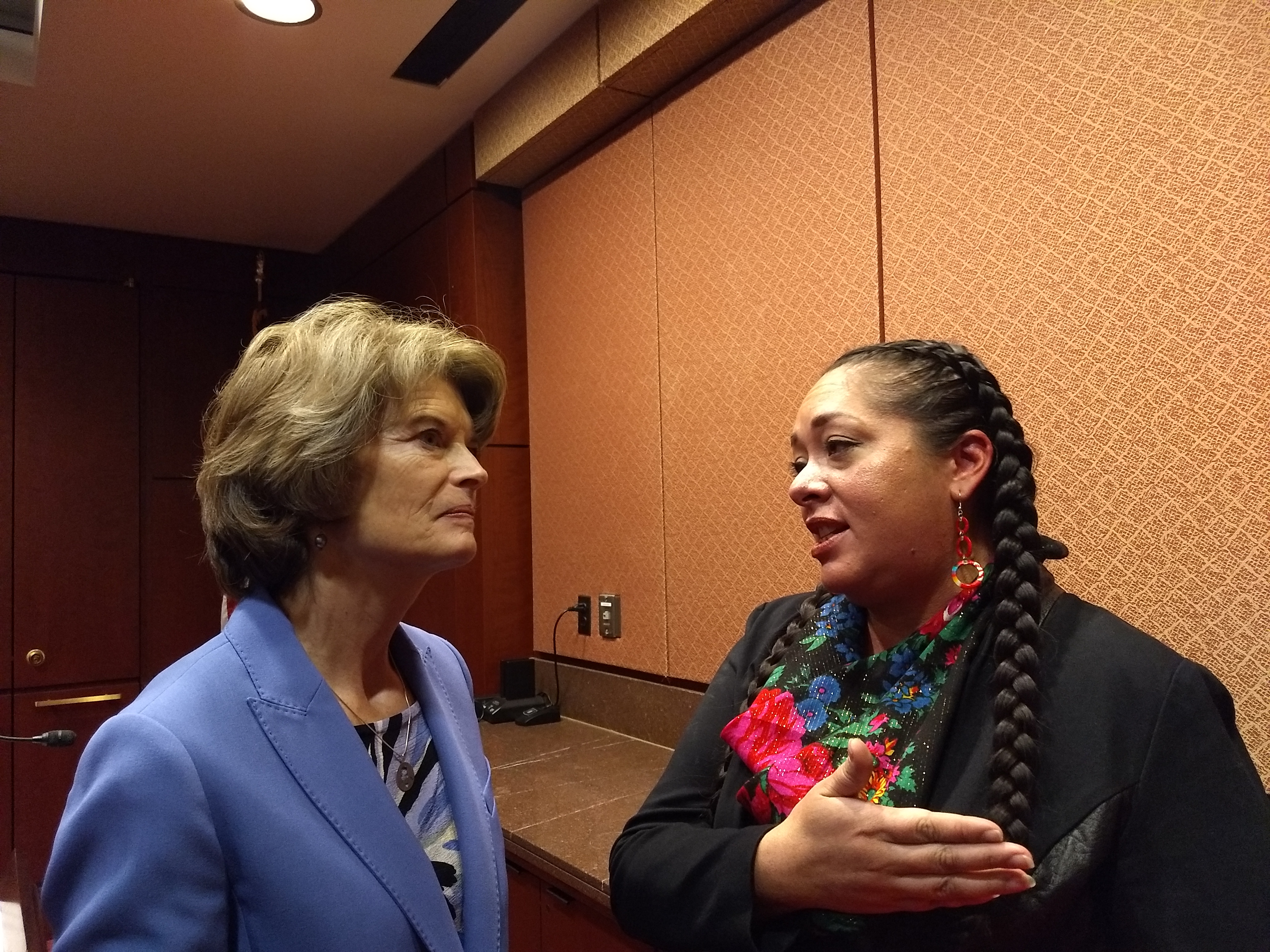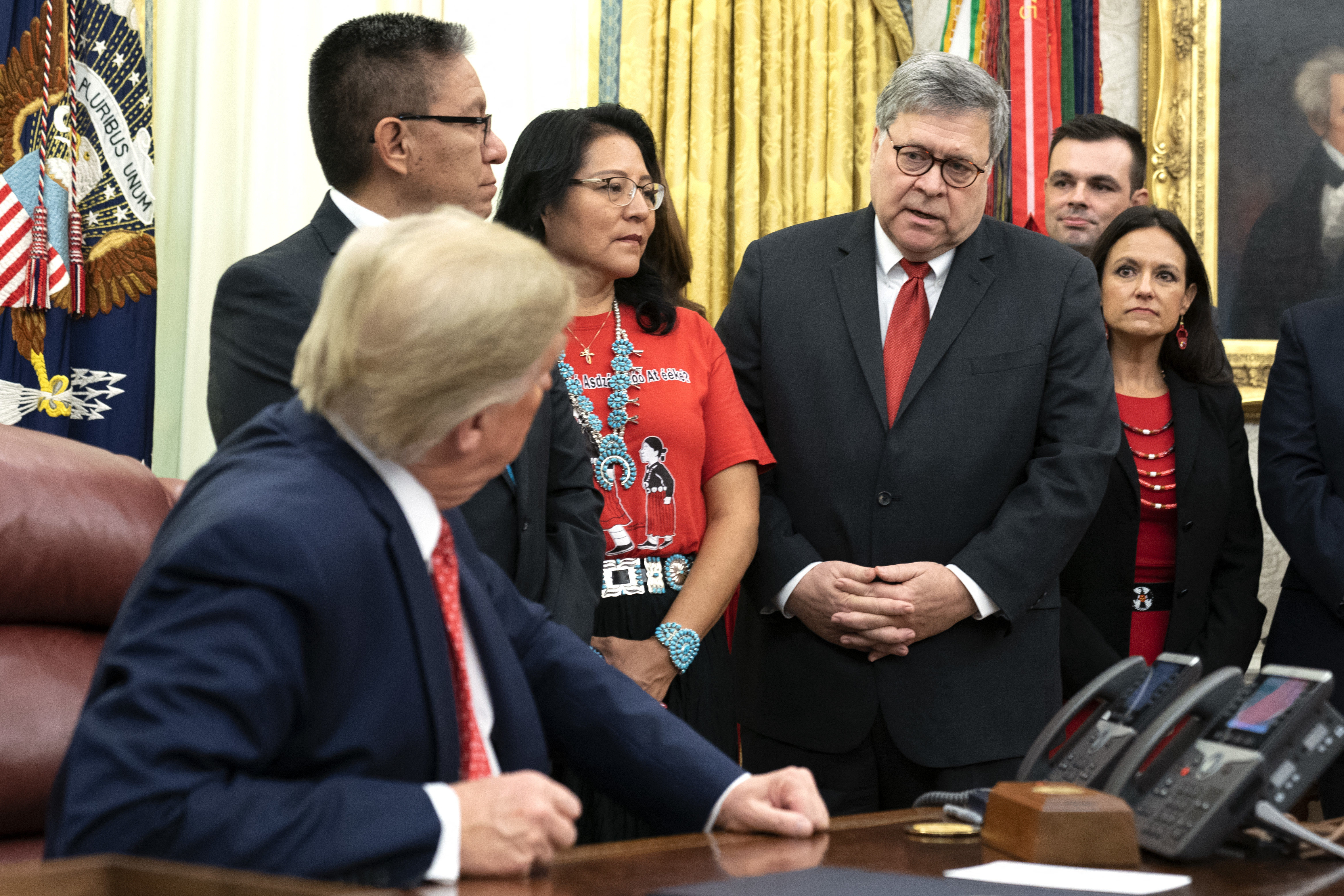Why human trafficking is a serious — but mostly invisible — problem in Alaska
A new federal effort targets a related problem — the epidemic of violence against Indigenous women and girls. Will that help curb trafficking?

Kimberly Larson remembers the first time she was approached by human traffickers.
She was 12 years old, walking downtown in Anchorage, and strangers pulled over to ask if she wanted a meal at Wendy’s. They asked where she was living, what she needed.
“They were looking for a young girl to exploit,” she told ArcticToday. It didn’t work. The strangers’ oddly familiar questions set off alarm bells for Larson, and she kept walking.
By the time Larson reached her forties, she thought she was out of the danger zone. She had a home, a husband, three kids. She was no longer that young, vulnerable-looking girl. But Larson’s life wasn’t as stable as it seemed. She started drinking too much, then doing drugs.
“Everything went sour,” she said. She split up with her husband and began living with a boyfriend, who was soon exploiting her. When she left him, she had nowhere to live, so she began sleeping on her coworker’s couch. Then she lost her job.
She was homeless, jobless, addicted to drugs and alcohol. Just when she thought she couldn’t get any lower, she met the man who would eventually be convicted of trafficking her and several other women.
Alaska’s high rates of trafficking
It’s hard to say exactly how common human trafficking is in Alaska or elsewhere in the United States.
First of all, there are differences in state and federal legal definitions of what exactly constitutes sex trafficking. Federally, if a third party is benefiting from a sex act by a person under the age of 18, that is sex trafficking. In Alaska, the age is extended to 20. If the victim is older than that, then to get a conviction, law enforcement must prove that a trafficker used force, fraud or coercion.
But many people who have been trafficked don’t know the law, and others don’t realize they’ve been coerced. Larson, for example, believed she had chosen her situation and blamed herself.
“They really do intimidate you, they make you feel like you can’t be without them,” she said. “I was so broken on the inside.”
It took a long time, she said, before she could recognize the trafficking as exploitation — and even longer before she could change the way she saw and valued herself.
Another problem: It’s difficult to collect the numbers on how many people are trafficked, often because it goes under the radar in the legal system.
“We really haven’t gotten the data, gotten the information that we need to really understand the extent of sex trafficking in Alaska and, really, nationally,” Sen. Lisa Murkowski, a Republican from Alaska, said in a conversation with ArcticToday.
But the studies that have been done show that trafficking is a pervasive issue across the United States — particularly in Alaska.

In 2017, researchers from Loyola University conducted a study on the link between youth homelessness and human trafficking. The researchers interviewed residents of Covenant House, a shelter for young people, in ten different North American cities, including Anchorage, Atlanta, Los Angeles, Oakland and Toronto.
They found that 20 percent of the children had been trafficked in some way; 14 percent of those interviewed had been trafficked for sex, while 8 percent had been trafficked for labor. Some endured both.
Of the cities surveyed, Anchorage had the highest rate of trafficking. One in four girls and one in five boys at Covenant House Alaska reported being victims of sex trafficking.
“Think about that,” Murkowski told ArcticToday. “Out of 10 different cities” — including New York and Oakland — “Anchorage had the highest reported prevalence of human trafficking.”
Alaska Natives — particularly from rural areas — and other Indigenous peoples across the Arctic have frequently been targets for human traffickers.
Indigenous women and girls face higher rates of violence and sexual exploitation than their non-Native peers, Murkowski said, and Alaska Natives are frequently targeted by traffickers because of their appearance.
“To think that women and girls — and boys, as well — are being identified this way, because they might command a higher price in the sex traffic, is absolutely horrible and horrifying,” she said.
Many of those who are trafficked have recently arrived in a major city, like Anchorage, from rural areas.
“Within 24 hours of being in town, they can be caught up in a trafficking operation,” Murkowski said last week in an address to the Senate.

Last week, two bills championed by Murkowski that highlight the epidemic of violence against Indigenous women and girls passed the Senate Indian Affairs Committee. Now, they’re headed to the U.S. Senate floor for a vote.
The Not Invisible Act and Savanna’s Act call attention to the high rates of trafficking, violence and murder facing Native Americans and Alaska Natives, and they seek to improve responses to this crisis from law enforcement, tribal leaders and others.
Though there have been substantial efforts from advocates to fill in the gaps on Indigenous women and girls who go missing or are murdered, data is rarely collected in an official or organized way, Murkowski said.
Earlier this month, the Senate’s sprawling spending package included $6.5 million for the U.S. Bureau of Indian Affairs to “take a more comprehensive look” and address the epidemic of missing and murdered Indigenous women and girls, as Murkowski, who chaired the appropriations process for this funding, said on Twitter.
This funding would support cold-case investigations, more equipment, training and background checks in order to address existing cases and to stop these crimes from happening in the first place, Murkowski added.
The $332 billion Senate spending bill must now be reconciled with the House version and pass committee before being signed by President Trump.
In the meantime, on Friday, November 22, Attorney General William P. Barr launched a “national strategy” for the Department of Justice to address missing and murdered Indigenous people. The strategy will help federal prosecutors and the FBI improve missing-persons investigations and data collection and analysis.
And on Wednesday, President Trump signed an executive order to establish a two-year task force on missing and murdered Indigenous people, particularly women and girls. The task force will coordinate with tribal governments, work on new and existing cases, collect more complete data, and clarify who has jurisdiction over cases, among other goals.

These two issues — missing and murdered women and girls, and human trafficking — are closely related, Murkowski told ArcticToday: “Many of those who go missing or who are ultimately murdered have been part of a trafficking ring or just been involved with human trafficking.”
Anchorage sees such high rates of trafficking in part because it’s a hub for the state of Alaska, Josh Louwerse, program director of Covenant House Alaska, told ArcticToday. Many people come from elsewhere in the state to go shopping, see friends and family, attend meetings like the Alaska Federation of Natives, and to use services not available in smaller towns and communities.
“When it comes to mental health, behavioral health, substance use, even though I think we have some giant gaps in our systems, this is the place where most of that happens,” Louwerse explained. “If they’re feeling suicidal and they need to go somewhere to check in, the places are really in Anchorage.”
Once they are discharged from the hospital or health center, Louwerse said, they may not have a place to stay, which is how many end up at Covenant House. And many others are picked up by traffickers; according to the 2017 study, 77 percent of the children who were trafficked were homeless at the time.
“Folks who are vulnerable, folks who are homeless, folks who have been abused and marginalized in all these sorts of ways, they’re more likely to be recruited, because they’re in a hard spot,” Louwerse said.
There have also been cases, he said, of traffickers specifically targeting women and girls in rural communities. A few years ago, traffickers admitted to plans of bringing victims from villages into the city, calling it “tundra pimping,” Louwerse said. And there’s also trafficking that happens within the rural communities themselves, he added.
Robin Bronen is the executive director of the Alaska Institute for Justice, which works with survivors of human trafficking.
“One of the huge issues in this state is related to the lack of law enforcement in rural Alaska,” she told ArcticToday. Without law enforcement in rural communities, patterns of abuse and violence that start or exacerbate the cycle of trafficking may never be addressed.
“If you’ve been the victim of domestic violence, sexual assault or child sexual abuse,” she said, “it increases your vulnerability to being victimized again in a human trafficking situation.”
“If we don’t deal with epidemics of domestic violence, sexual assault and child sexual abuse, we’re not doing enough to prevent human trafficking from occurring,” Bronen said.
Larson called the cycles of violence and trafficking an “epidemic” in Alaska, and said that girls are being targeted at younger and younger ages.
It took a long time for Larson to get back on her feet again. “It was really hard to change my thought process,” she said. She’d long believed she wasn’t worth loving. “When you have that feeling your whole life, it’s super easy to be used by men,” she said.
Now, Larson has reconnected with her children and her faith; she has a job and two puppies at home. “I have a purpose,” she said. “I have reasons to be okay and to be happy.”
‘This is not the life I want to live’
One organization that helped get her find her confidence is a nonprofit called Priceless Alaska, which has assisted about 140 women and girls after being trafficked.
Adrienne Tucker, a case manager at Priceless, said that about 70 percent of the girls and women she meets don’t realized they were trafficked. “A lot of them feel like it’s their fault,” she said. When she meets women who may have been trafficked, she asks specific questions to ascertain if they endured force, fraud or coercion.
“Were you forced to do something you didn’t want to do? Or were you brought into Anchorage?” If someone was brought into the city from, say, Kotzebue, that can be a red flag, Tucker said. “Did they meet someone online that offered them a job of modeling or something like that?” Many of the women and girls who work with Priceless were recruited online — through social media, dating sites and job sites.
Even if the women and girls initially believe they chose this life, Tucker said, “they’ll flat-out say it like, I don’t want to do this anymore. This is not the life I want to live. And I feel like I have no control over my life.” That’s when they’ll realize they’ve been trafficked, she said.
Priceless connects trafficking survivors with mentors who help the women and girls build a new life. Tucker will help find housing, transportation, substance use treatments, navigate protective orders and custody battles and more. Then the mentors help the survivors fill out housing and job applications, help them move, take them to eat.
“Whatever it is, they’re just being a friend to them,” Tucker said. “Kind of introducing them to a new normal.”
Alaska’s main industries — tourism, fishing, oil and gas — make it particularly vulnerable to sex trafficking, Tucker said. She said trafficking is a growing problem throughout the state, but it’s especially a problem for women and girls from rural communities. “The most vulnerable population are the ones from villages because they’re so tiny,” she said. Alaska Native women and girls make up the biggest client population at Priceless, she said.
The problem of human trafficking appears to be growing across in other Arctic nations, as well — though it’s difficult to find numbers that are specific to those nations’ Arctic regions.
In Canada, First Nations women and young people make up between 70 and 90 percent of those found in the sex trade in areas where Indigenous people represent less than 10 percent of the population, researcher Victoria Sweet found. As the Arctic heats up and more people travel to the region, she wrote, the number of Indigenous women in Canada’s North who are trafficked will likely increase, if measures aren’t taken to prevent that.
“The combination of development in rural locations, the demographic shift of outsiders moving to the north, and the lack of close monitoring in this circumpolar area is a potential recipe for disaster for indigenous women in the region,” Sweet wrote in her 2014 study.
A 2014 report by Helen Roos also found that “Inuit represent one of the most vulnerable populations in Canada.”
Among Arctic nations, Russia suffers from especially high rates of trafficking, according to the U.S. State Department’s annual report on human trafficking. Labor trafficking is the predominant problem, the report said, but sex trafficking has also continued to occur.
In 2018, Russia reported 14 investigations and 18 convictions related to trafficking. But the Global Slavery Index estimated that 794,000 people were trafficked in Russia in 2016. For comparison, the organization estimates about 9,000 people in Norway and 17,000 in Canada are trafficked every year. (The United States, Sweden and Norway were among their list of the top ten countries working to address human trafficking.)
Strengthening communities, gathering data
Josh Louwerse at Covenant House Alaska said strengthening services for Alaska Native communities, particularly in rural areas, should be a major part of the response to trafficking. That includes housing and treatment for mental, behavioral and substance use issues.
“If we can build stronger systems of service, there’s less vulnerable people to be trafficked,” he said. “We should get in front of that, and be able to get you into a safe place so that never happens.”
“Any way that we can strengthen communities and their ability to navigate hard things and hard situations with young people would go a long way,” Louwerse said.
In addition, more education on what trafficking is — for survivors, but also for law enforcement and judges — would help to identify and prosecute cases. Larson said women and girls who have been trafficked often see police as the people who want to bust them, not help them.
But Louwerse is cautiously optimistic. Right now, trafficking is getting a lot of attention, he said — but the next step must be system-wide changes, before momentum is lost. That means educating those in law enforcement and the judicial system on what human trafficking is and how it should be prosecuted; it means collecting data more efficiently and effectively in order to understand the scope of the problem; and it means creating more accessible health and social services for those who need them.
“Otherwise, we’re going to have this wave [of interest] and then go on to the next thing,” Louwerse said.
Sen. Murkowski told ArcticToday that this is why she is introducing the issue to Congress in bill after bill.
“What we’re trying to do here is identify those areas where — through legislation, through administrative process, through training, through staffing — we can increase the reporting [of cases]; and then, as we increase the reporting, we can also increase the prosecution,” she said.
“The other side of it is also to address any gaps in services for the victim,” she said.
“It doesn’t make any difference how far away you are,” Murkowski said. “You deserve to have that level of justice. You deserve to have that protection.”